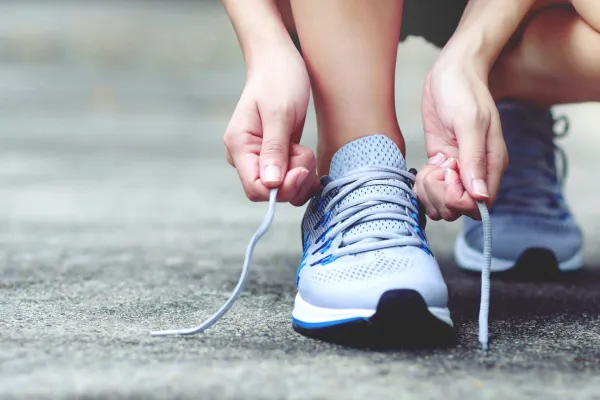
The Connection Between Footwear and Ingrown Toenails
We all know that the right pair of shoes can make a huge difference in comfort, but did you know that the wrong shoes could lead to painful foot conditions like ingrown toenails? Ingrown toenails are a common problem that occurs when the edge of the toenail grows into the surrounding skin, causing pain, swelling, and sometimes infection. While there are several factors that contribute to ingrown toenails, one of the most significant causes is wearing tight or ill-fitting shoes. In this blog post, we’ll explore the connection between footwear and ingrown toenails and offer tips for choosing the right shoes to prevent this painful condition.
How Tight or Ill-Fitting Shoes Cause Ingrown Toenails
When your shoes are too tight or don’t fit properly, they put unnecessary pressure on your toes. This pressure can force your toenails to grow in an abnormal direction, often pushing the edges of the toenail into the surrounding skin. Over time, this can cause irritation and lead to the development of an ingrown toenail.
Here are a few ways ill-fitting shoes contribute to ingrown toenails:
Narrow Toe Boxes
Shoes with a narrow or pointed toe box can crowd the toes together, causing them to press against one another. This added pressure can push the toenail into the skin, making it more likely to become ingrown. High heels are a prime example of footwear that can cause this issue, as they force the toes into a cramped position.Too Tight or Too Loose Shoes
Shoes that are too tight squeeze the toes, while shoes that are too loose cause your foot to slide around, both of which can lead to toe trauma. Tight shoes can rub against the toenail, causing irritation, while loose shoes can cause your toenail to grow at an odd angle due to the constant friction.Lack of Proper Arch Support
Shoes without proper arch support can cause your feet to roll inward (pronation), which places extra pressure on the toes. This misalignment can contribute to the toenail growing inwards toward the skin.High Heels
While stylish, high heels are known to push your toes into a cramped space at the front of the shoe. This constant pressure can contribute to the development of ingrown toenails over time, especially if worn frequently.
What to Look for in Shoes to Prevent Ingrown Toenails
Now that we understand how improper footwear can cause ingrown toenails, let’s look at what you should consider when choosing shoes to help prevent this painful condition:
Proper Fit
The most important factor in shoe selection is fit. Your shoes should fit comfortably with enough room in the toe box to allow your toes to move freely. A general rule of thumb is to have about a thumb’s width of space between your longest toe and the end of the shoe.Wide Toe Box
Shoes with a wide toe box are essential for allowing your toes to spread out naturally. This reduces pressure on the toenails and prevents them from growing inward. Many brands offer shoes with a wider fit to accommodate various foot shapes.Arch Support
Proper arch support is vital to prevent foot misalignment that can put additional pressure on the toes. Look for shoes that offer adequate arch support, particularly if you have flat feet or high arches. This helps align your feet and distributes pressure evenly.Avoid High Heels
High heels can force your toes into a cramped position, which is not ideal for toenail health. If you must wear heels, try to limit their use and opt for a lower heel with more cushioning and room in the toe box.Breathable Material
Shoes made from breathable materials, such as leather or mesh, allow for better airflow and reduce moisture buildup. Keeping your feet dry helps prevent infections that can occur with ingrown toenails.Cushioning and Comfort
Shoes with good cushioning help absorb impact, reducing stress on your toes. Cushioned insoles or orthotics can also be added for additional support and comfort.
Other Tips for Preventing Ingrown Toenails
While proper footwear plays a significant role in preventing ingrown toenails, here are a few additional tips to keep your feet healthy:
Trim Your Toenails Properly: Always cut your toenails straight across and avoid rounding the edges, which can encourage the toenail to grow into the skin.
Avoid Tight Socks or Hosiery: Just like tight shoes, tight socks can put unnecessary pressure on the toes, contributing to the risk of developing ingrown toenails.
Practice Foot Hygiene: Keep your feet clean and dry to reduce the risk of infection. Wash your feet regularly and dry them thoroughly, especially between the toes.
When to See a Podiatrist
If you notice any signs of an ingrown toenail—such as pain, redness, or swelling—it’s important to address it promptly. Early treatment can prevent further complications and help avoid infection. If the ingrown toenail doesn’t improve with home care or becomes infected, a podiatrist can help with professional treatment, which may include lifting the nail or, in some cases, partial nail removal.
Conclusion
Ingrown toenails can be painful, but they are often preventable with the right footwear. By choosing shoes that fit properly, offer adequate support, and allow your toes to breathe, you can significantly reduce your risk of developing this common condition. Remember, your feet are the foundation of your body, so treating them with care and attention will go a long way toward keeping them healthy.
If you’re concerned about ingrown toenails or need help selecting the right footwear, don’t hesitate to reach out to Pomona Valley Podiatry Group. We’re here to help you keep your feet in top shape!
Ask And His Team
Fill in the form to request a Call From Our Team
One of our team will call you for FREE and answer any questions or concerns you may have about your uncomfortable foot condition





